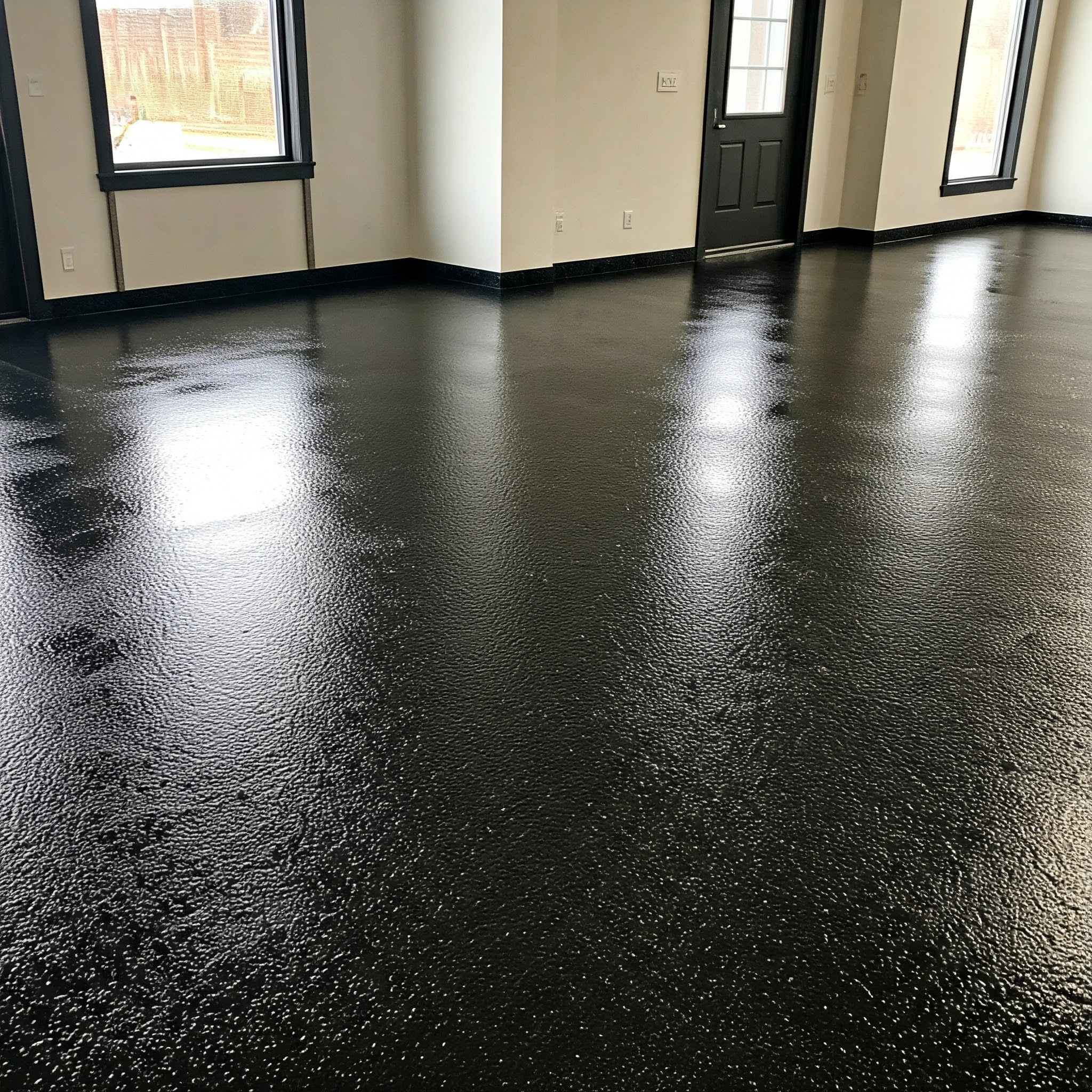Epoxy flooring is a durable, visually appealing, and versatile solution for residential, commercial, and industrial spaces. However, its installation requires precise conditions for optimal results. Weather factors such as temperature, humidity, and air circulation play a significant role in the success of an epoxy flooring project. At Gresham Concrete Coatings, we understand how these factors affect the process and implement strategies to deliver flawless floors in any climate.
Why Weather Matters in Epoxy Flooring Installation
Epoxy flooring involves a chemical reaction between resin and hardener. This reaction is highly sensitive to environmental factors, which can affect:
- Curing Time: Temperature and humidity influence how quickly the epoxy sets.
- Adhesion: Surface preparation and bonding depend on stable conditions.
- Appearance: Improper conditions can lead to bubbling, discoloration, or an uneven finish.
- Durability: Weather impacts the long-term performance of the epoxy coating.
Understanding how weather affects epoxy installation ensures a high-quality, durable floor that stands the test of time.
Key Weather Conditions Impacting Epoxy Installation
Weather Condition |
Impact on Epoxy Installation |
Gresham Concrete Coatings Solution |
| Temperature | – Low temperatures slow curing time, causing tackiness.
– High temperatures speed curing, risking uneven application. |
– Apply epoxy within the ideal 60°F to 90°F range.
– Use space heaters or cooling techniques to maintain optimal temperature. |
| Humidity | – High humidity can cause peeling, cloudiness, or poor adhesion.
– Low humidity can reduce curing time, creating challenges. |
– Use dehumidifiers and moisture meters to control humidity levels. |
| Surface Moisture | – Moisture from rain or damp concrete compromises adhesion.
– Can cause bubbling, cracking, or peeling. |
– Inspect and prepare surfaces with grinders and moisture barriers to ensure dryness. |
| Air Circulation | – Poor airflow traps humidity and delays curing.
– Excessive airflow may cause debris or uneven curing. |
– Maintain balanced air circulation to ensure even curing and prevent debris. |
| Seasonal Considerations | – Spring: Fluctuating temperatures and high humidity.
– Summer: High temperatures accelerate curing. – Winter: Cold weather requires heat management. |
– Adjust installation schedules and use climate control equipment to adapt to seasonal conditions. |
| Rain | – Increases surface moisture, affecting adhesion and finish. | – Prevent rain exposure during installation, using proper moisture barriers and preparation techniques. |
Our team adapts to seasonal challenges to ensure high-quality installations year-round.
How Gresham Concrete Coatings Handles Weather Challenges
At Gresham Concrete Coatings, we take a proactive approach to overcoming weather-related challenges during epoxy flooring installation:
- Pre-Installation Assessments: We evaluate site conditions, including temperature, humidity, and moisture levels.
- Climate Control Equipment: Dehumidifiers, heaters, or fans are used to create the perfect environment for epoxy application.
- Scheduling Flexibility: We work around weather patterns to minimize disruptions and ensure ideal conditions.
- High-Quality Materials: Our epoxy products are formulated to perform well in various climates.
Frequently Asked Questions
1. Can epoxy flooring be installed in cold weather?
Yes, but cold weather slows curing. Space heaters or other methods may be used to maintain optimal temperatures.
2. How does humidity affect epoxy installation?
High humidity can cause peeling, cloudiness, or poor adhesion. Controlled environments with dehumidifiers are ideal for installation.
3. Is rain a problem for epoxy flooring installation?
Rain increases surface moisture, which can compromise adhesion. Proper preparation and moisture barriers help prevent issues.
4. Can epoxy floors be installed in the summer?
Yes, but high temperatures can accelerate curing. Early morning or evening installations are often recommended during summer months.
5. How is surface moisture managed before installation?
Moisture meters are used to detect dampness, and grinders or moisture barriers are applied to ensure a dry surface.
6. Why is air circulation important during installation?
Balanced airflow prevents trapped humidity, promotes even curing, and keeps the surface clean from debris.
7. What happens if epoxy is applied outside the ideal temperature range?
Applying epoxy outside the recommended temperature range can cause uneven curing, bubbling, or tacky surfaces that fail to harden.
8. Can epoxy flooring be installed in humid climates?
Yes, with proper precautions. Dehumidifiers and moisture-control techniques ensure successful installation in humid conditions.
9. How long does it take for epoxy to cure in varying weather conditions?
Curing time ranges from 24-72 hours, but extreme temperatures or humidity can extend or shorten this period.
10. How does Gresham Concrete Coatings ensure weather doesn’t affect the installation?
We use advanced equipment to control climate conditions and adapt our methods to deliver flawless results regardless of the weather.
Epoxy flooring is a durable and stylish solution, but weather conditions can significantly impact the outcome. Trust Gresham Concrete Coatings to manage these challenges and deliver high-quality results in any climate. Contact us today to learn more!

